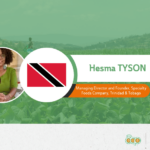New EU Plant Health Rules Affecting Mango Exports
- 14/05/2019
- Posted by: Gaetan Dermien
- Category: Uncategorized
The new European Union directive on mango imports will be applied from 1 September 2019. To ensure that mango exports can continue in the 2020 season, producers, exporters and National Plant Protection Organisations (NPPOs) must act now.
On 8 March COLEACP issued an information bulletin on new EU rules affecting mango imports. These rules are being introduced in response to high numbers of interceptions of mango imports due to the presence of fruit fly (non-European Tephritidae). On 21 March 2019, the new rules were officially adopted as Commission Implementing Directive (EU) 2019/523, amending Annexes I to V of the EU Plant Health Directive 2000/29/EC. The new directive came into force on 31 March, and will be applied from 1 September 2019.
Under its Fit For Market and Fit For Market SPS programmes*, COLEACP is available to support NPPOs and the mango industry to develop the required dossiers (described below) and to help put the necessary actions in place.
The new rules specify four possible options. Exporting countries must comply with one of these options in order for exports to the EU to be permitted.
(a) The fruits must originate in a country recognised as free from Tephritidae (non-European).
(b) The fruits must originate in an area established as free from Tephritidae by the exporting country’s NPPO.
(c) No signs of Tephritidae have been observed at the place of production (farm/plantation) and its immediate vicinity since the beginning of the last complete mango cycle. To prove this, official inspections must be carried out at least monthly during the 3 months before harvest. None of the fruits harvested at this production site must show signs of the presence of Tephritidae in official inspections. And, finally, information on traceability must be included in the phytosanitary certificate.
(d) The mango must have been subjected to an effective treatment to ensure that it is free from Tephritidae, and the treatment data must be included in the phytosanitary certificate. In addition, the treatment method must be communicated to the European Commission by the NPPO in writing beforehand.
Of these options, (a) and (b) are not open to mango-exporting countries in West Africa, as fruit fly is known to be present there. Option (c) is also unlikely to be a possibility, given the widespread distribution of this pest.
This leaves only option (d), meaning that mango exports will only be permitted into the EU if they have been “subjected to an effective treatment”. Before the start of the next mango season, the NPPO in each country must send a dossier to the European Commission outlining in detail the treatment that will be applied. This treatment can include post-harvest control of fruit fly, and/or a pre-harvest “systems approach” that covers control and management (IPM) of the pest in the field.
To prepare this dossier, the NPPO must work with the mango industry to agree on the “effective treatment”. Once the dossier is submitted, all growers must strictly follow this agreed treatment. It is important therefore to come up with a treatment plan that is not only effective, but is also practical for both large- and small-scale growers.
To submit a request for support from Fit For Market, email support@coleacp.org
* Fit For Market is financed by the European Union at the request of the ACP group of states and co-financed by the Agence Française de Développement; Fit For Market SPS is financed by the European Union at the request of the ACP group of states.



![EU and GB approval changes (January-May 2024) 9-FFM+-[ENG]](https://news.colead.link/wp-content/uploads/2024/06/9-FFM-ENG-150x150.jpg)
